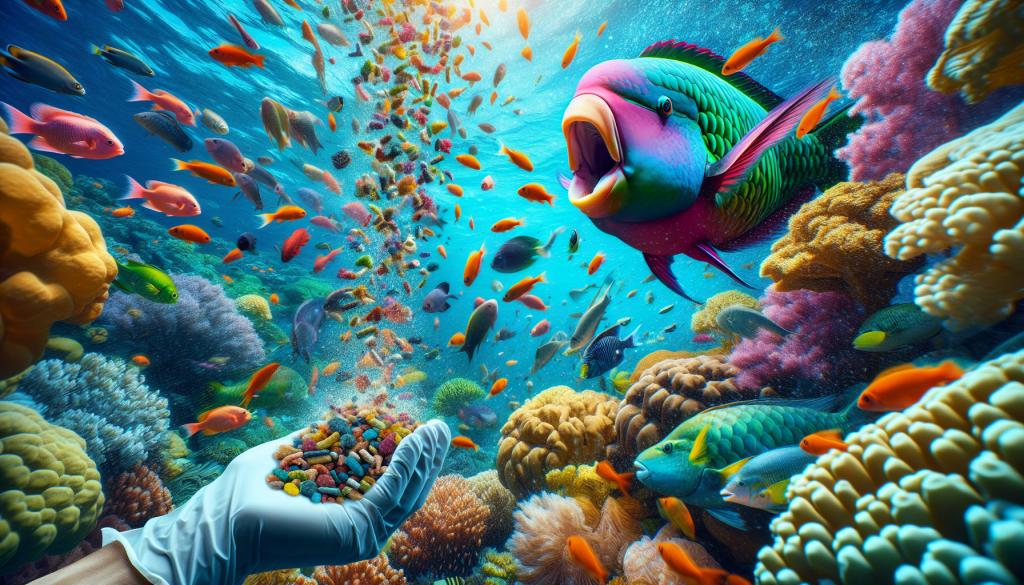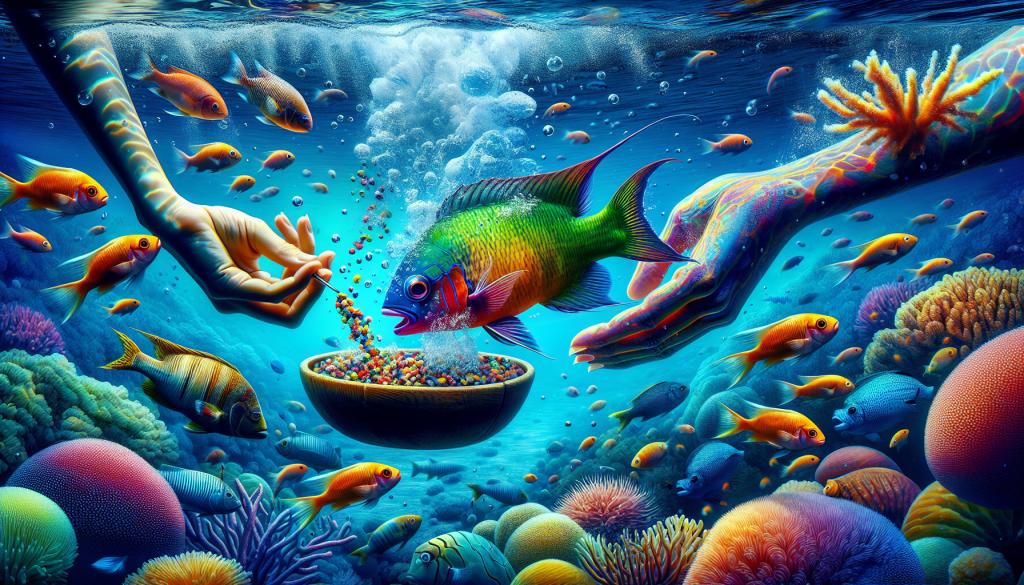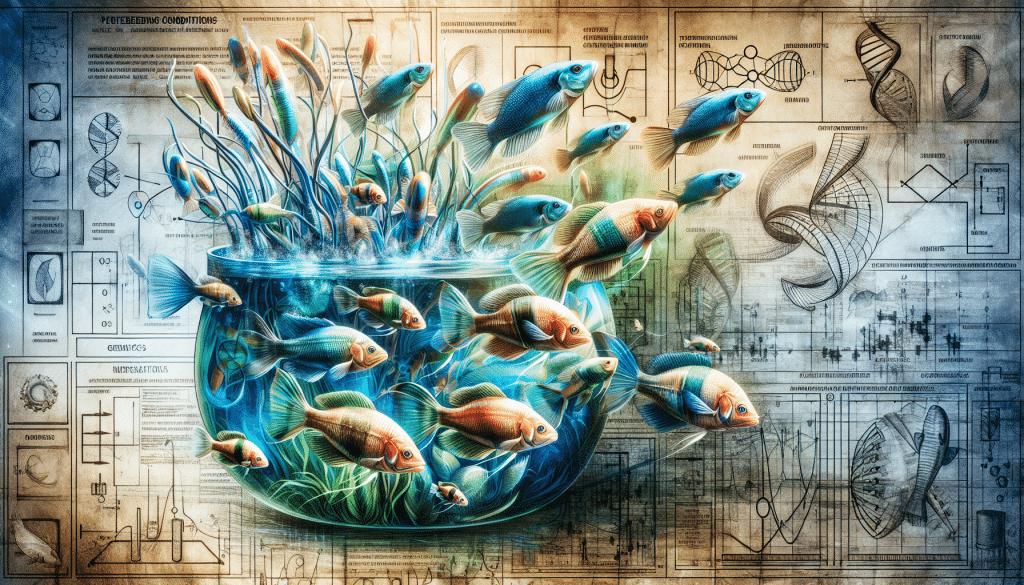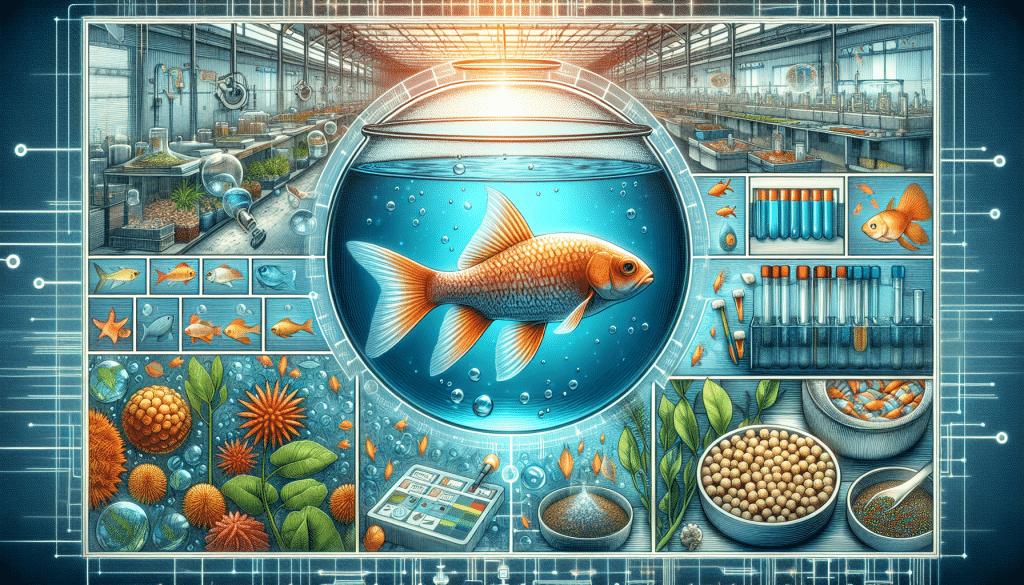In the world of saltwater fishkeeping, ensuring proper feeding techniques is essential for the health and vitality of your marine pets. From understanding the diverse dietary requirements of different species to implementing feeding strategies that mimic their natural habitats, this article explores the most effective ways to provide nourishment for saltwater fish. By following these expert recommendations, you can enhance the well-being of your aquatic companions and create a thriving marine ecosystem within your aquarium.

Understanding Saltwater Fish Dietary Needs
Saltwater fish have specific dietary needs that are crucial for their health and well-being. Understanding these needs is essential for any saltwater fish owner or aquarist. By providing a proper diet, you can ensure that your fish remain healthy, vibrant, and thriving in their underwater habitat.
Nutritional Requirements
Meeting the nutritional requirements of saltwater fish is vital to promote growth, enhance coloration, support immune function, and improve overall vitality. These requirements include a balance of proteins, fats, carbohydrates, vitamins, and minerals. Protein is especially important as it aids in muscle development and contributes to the overall health of the fish. Fats provide a concentrated source of energy, while carbohydrates serve as a source of dietary fiber and energy.
Carnivores, Herbivores, and Omnivores
Saltwater fish can be categorized into three main dietary groups: carnivores, herbivores, and omnivores. Understanding your fish’s dietary classification is essential to provide them with the appropriate food. Carnivorous fish primarily eat other fish, crustaceans, and meaty foods. Herbivores, on the other hand, consume algae, plants, and other vegetarian options. Omnivorous fish have a more flexible diet and can consume a combination of both meaty and plant-based foods.
Variety in Diet
Offering a varied diet is crucial for saltwater fish. Like humans, fish benefit from a diverse range of nutrients and flavors. Providing a mix of different foods replicates their natural feeding habits and keeps their interest in eating high. Including a variety of frozen foods, live foods, pellets, flakes, and DIY fish food recipes will ensure that your fish receive a complete and balanced diet.
Feeding Frequency
The feeding frequency for saltwater fish can vary depending on their species, size, and age. It’s important to research the specific needs of your fish to determine the appropriate feeding frequency. In general, smaller fish should be fed multiple times a day, while larger fish can be fed once or twice a day. It’s important not to overfeed, as this can lead to water quality issues and health problems for the fish. Monitoring their feeding habits closely will help you adjust the feeding frequency accordingly.
Types of Saltwater Fish Foods
When it comes to feeding saltwater fish, there are various options available. Understanding the different types of fish food will help you choose the most suitable option for your fish.
Frozen Foods
Frozen foods are a popular choice for saltwater fish due to their convenience and nutritional value. These foods are typically frozen immediately after being caught or harvested, preserving their freshness and nutritional content. Frozen foods come in various forms, such as whole fish or shrimp, brine shrimp, mysis shrimp, and krill. They provide a good source of protein and essential fatty acids, which are essential for fish growth and health.
Live Foods
Live foods are another option for feeding saltwater fish. They include live organisms such as brine shrimp, daphnia, copepods, and feeder fish. Live foods are highly nutritious and mimic the natural hunting behavior of fish, stimulating their appetite and providing mental stimulation. However, live foods may also carry the risk of introducing parasites or diseases into your aquarium. It’s important to carefully source and quarantine live foods before feeding them to your fish.
Pellets and Flakes
Pellets and flakes are convenient and widely available options for feeding saltwater fish. These commercially prepared foods come in a variety of sizes and formulations to cater to the specific dietary needs of different fish species. Pellets are sinkable or floatable, providing options for fish that prefer feeding at different levels of the water column. Flakes, on the other hand, are suitable for fish that feed at the water’s surface. It’s essential to choose high-quality pellets and flakes that contain a balanced blend of nutrients to support fish health.
DIY Fish Food Recipes
Some saltwater fish owners prefer to create their own fish food using homemade recipes. DIY fish food allows owners to customize the ingredients and provide their fish with a diverse range of nutrients. Common ingredients used in DIY fish food recipes include fresh seafood, vegetables, gelatin, and vitamin supplements. It’s important to research and follow trusted recipes to ensure that the homemade food meets the essential nutritional requirements of your fish.
Importance of Food Size
When feeding saltwater fish, the size of the food is an important consideration. Fish have different mouth sizes, and providing appropriately sized food ensures that they can consume it effectively. Offering food that is too large may result in the fish unable to eat it, while food that is too small may not provide sufficient nutritional value. It’s important to choose food sizes that match the fish’s mouth size, promoting optimal feeding and nutrient intake.

Feeding Techniques for Different Saltwater Fish
Understanding the various feeding techniques for different saltwater fish species allows you to cater to their specific feeding behaviors and preferences. Here are some commonly used feeding techniques:
Targeted Feeding
Targeted feeding involves placing food directly in front of a specific fish or group of fish. This technique is useful for ensuring that particular individuals receive an adequate amount of food, especially in cases where competition for food may be high. Targeted feeding can also be used to train fish to eat from a specific location or device, promoting positive feeding behavior.
Broadcast Feeding
Broadcast feeding involves scattering food throughout the aquarium, allowing fish to swim around and actively forage for their food. This technique mimics the natural feeding behavior of fish, encouraging natural instincts and providing mental stimulation. It’s especially useful for fish that are more active swimmers and enjoy hunting for their food.
Bottom Feeding
Some saltwater fish are bottom-dwellers and prefer to feed near or on the substrate. Providing sinking pellets or tablets ensures that these fish receive their food close to their preferred feeding area. It’s important to monitor the feeding habits of bottom-dwelling fish to ensure that they are consuming enough food and that the food reaches the intended target area.
Surface Feeding
Surface feeding is suitable for fish that prefer to feed at the water’s surface, such as certain species of freshwater and saltwater fish. Floating flakes or pellets can be used to offer food to these fish, allowing them to pick at the food from the water’s surface. Surface feeders often display unique feeding behaviors and can create an exciting spectacle for aquarium enthusiasts.
Feeding Fish with Specialized Diets
Some saltwater fish have specialized diets that require specific feeding techniques or food types. For example, filter-feeding organisms like corals and some invertebrates rely on capturing and consuming tiny particles suspended in the water. Providing a slow and continuous flow of microplankton or phytoplankton through a specialized dosing system can ensure their nutritional needs are met. It’s important to research the dietary requirements of your fish and adopt appropriate feeding techniques accordingly.
Feeding Equipment and Accessories
To optimize the feeding process and ensure the nutritional needs of your saltwater fish are met, various feeding equipment and accessories are available. These tools can enhance feeding efficiency and convenience for both the fish and the aquarist.
Feeding Rings
Feeding rings are useful accessories that create a confined area in the aquarium for food to be placed. By using a feeding ring, you can prevent food from dispersing throughout the tank, ensuring that the intended fish receive their fair share. Feeding rings are particularly useful in community tanks where fish of various sizes and feeding preferences coexist.
Automated Feeders
Automated feeders are devices that can be programmed to dispense fish food at regular time intervals. These feeders are beneficial for people who may not be able to feed their fish consistently, such as during vacations or busy periods. Automated feeders can dispense a variety of dry or frozen foods and can be adjusted to accommodate different feeding frequencies.
Feeding Tongs and Pipettes
Feeding tongs and pipettes are specialized tools used to feed delicate or elusive species. They allow for precise food placement and can be used to target feed specific individuals or difficult-to-reach areas. These tools are especially useful for feeding corals, anemones, or small invertebrates that may require extra attention and care.
Food Soakers and Skimmers
Food soakers and skimmers are devices used to prepare and clean food before it is fed to the fish. Soakers are used to thaw and soak frozen food, ensuring that it is properly rehydrated and ready for consumption. Skimmers, on the other hand, remove excess oils and impurities from the food, providing a cleaner and more nutritious meal for the fish.

Live Feeding Considerations
While live foods can be a valuable addition to a saltwater fish’s diet, there are some important considerations to keep in mind.
Benefits and Risks of Live Food
Live foods offer numerous benefits for saltwater fish, including high nutritional value, increased appetite stimulation, natural hunting behavior, and mental stimulation. However, there are also risks associated with live food. Live foods can introduce parasites, diseases, or harmful bacteria into your aquarium. Thoroughly researching and quarantining live food sources can help mitigate these risks and ensure the health and well-being of your fish.
Cultivating Live Feed
If you choose to cultivate your own live food, such as brine shrimp or copepods, it’s essential to establish a suitable culture system. This involves providing the right environmental conditions, food source, and regular maintenance to ensure a thriving and sustainable population. Cultivating live feed can be a rewarding process, as you have full control over the quality and nutritional value of the food provided to your fish.
Quarantine of Live Feed
Before introducing any live food into your aquarium, it’s important to quarantine and inspect it for parasites, diseases, or bacteria. Failure to do so can lead to the introduction of harmful pathogens that can negatively impact the health of your fish and other tank inhabitants. Quarantining live food can help prevent potential outbreaks and maintain a healthy aquatic environment.
Live Feeding Ethics
When using live food, it’s important to consider the ethical implications. Some aquarists have ethical concerns regarding the use of live organisms as food for fish. If you have ethical reservations, there are alternative feeding options available, such as frozen or pellet foods, that still provide the necessary nutrition for your fish. It’s important to make an informed decision based on your personal values and beliefs.
Maintaining Water Quality Through Feeding
Proper feeding practices play a crucial role in maintaining optimal water quality in a saltwater aquarium. By following a few key guidelines, you can ensure that your fish remain healthy and your aquarium environment remains stable.
Avoiding Overfeeding
One of the most common mistakes made by saltwater fish owners is overfeeding. Overfeeding not only leads to excessive waste but also contributes to poor water quality. Uneaten food breaks down, releasing harmful compounds into the water, such as ammonia and nitrite. These compounds can be toxic to fish and other tank inhabitants. It’s important to provide only as much food as your fish can consume within a few minutes and remove any excess food promptly.
Managing Leftover Food
If there is leftover food after a feeding session, it’s crucial to remove it from the tank. Using a net or siphon to remove uneaten food particles will prevent them from decomposing and affecting water quality. Regularly cleaning the substrate and performing water changes will also help remove any accumulated waste or excess nutrients from the aquarium.
Impact of Food on Water Parameters
Fish food can have a direct impact on water parameters, such as pH, ammonia levels, and nitrate levels. Some fish foods can be more acidic or basic, potentially affecting the pH of the aquarium water. Additionally, uneaten food can lead to an increase in ammonia and nitrite levels, which can be harmful to fish. Monitoring water parameters regularly and adjusting feeding practices accordingly will help maintain a stable and healthy aquatic environment.
Feeding and Tank Cleanliness
Feeding time can create an opportunity to assess and maintain the overall cleanliness of the tank. While feeding, take note of any debris or waste present in the water. This is an excellent opportunity to perform a partial water change, clean the aquarium equipment, and remove any excess algae or detritus that may have accumulated. Combining feeding routines with occasional tank maintenance helps to keep the aquarium environment pristine and supports the health and longevity of your fish.
The Role of Supplements in Feeding
In some cases, supplements may be necessary to ensure that saltwater fish receive all the essential nutrients for optimal health and vitality. Here are some common supplements used in saltwater fish feeding:
Vitamins and Amino Acids
Vitamins and amino acids are essential for the growth, development, and overall well-being of saltwater fish. While a well-balanced diet can provide most of these nutrients, supplements may be required to meet specific nutritional needs. Vitamin supplements, such as Vitamin C or B-complex vitamins, can enhance immune function and promote fish health. Amino acid supplements, like lysine or methionine, can support protein synthesis and muscle development.
Calcium and Minerals for Invertebrates
Invertebrates, such as corals and crustaceans, often require additional calcium and minerals to support their skeletal growth and overall health. Calcium is vital for coral reef-building, while minerals like iodine, magnesium, and strontium are essential for various cellular functions. Supplementation of these minerals can be done through commercially available additives or through the use of specially formulated calcification agents.
Trace Element Additions
Trace elements are essential micronutrients required in small amounts for various physiological processes in fish and invertebrates. These elements include iron, zinc, copper, and manganese, among others. Maintaining optimal trace element levels is crucial for the health and vitality of saltwater fish. Trace element supplements can be added to the aquarium water or incorporated into the fish’s diet through specialized food preparations.
Probiotics for Digestive Health
Probiotics are beneficial bacteria that help promote a healthy and balanced gut microbiome in fish. These beneficial bacteria aid in digestion, enhance nutrient absorption, and support immune function. Adding probiotics to the fish’s diet can improve overall digestive health and reduce the risk of intestinal diseases. Probiotics come in various forms, including specially formulated fish food, water additives, or dietary supplements.
Feeding Techniques for Reef Tanks
Reef tanks, characterized by the presence of corals, invertebrates, and diverse marine life, require specific feeding techniques to meet the unique needs of these organisms.
Coral Feeding
Corals are photosynthetic organisms that can obtain much of their nutrition from symbiotic algae, called zooxanthellae, residing within their tissues. However, many corals also benefit from direct feeding. This can include target feeding with specialized coral foods or the addition of dissolved organic compounds to enhance corals’ coloration and growth. Careful observation and research into the specific dietary requirements of the corals in your tank will help ensure their health and vibrancy.
Invertebrate Feeding Strategies
Invertebrates in reef tanks, such as starfish, sea urchins, and anemones, have specific feeding strategies and requirements. Some are deposit feeders, consuming detritus or decaying matter that settles on the substrate, while others are filter feeders, capturing microscopic particles from the water column. Providing suitable food options and ensuring adequate feeding for these invertebrates are essential to support their well-being.
Microplankton and Phytoplankton Dosing
Many reef tank inhabitants can benefit from the supplementation of microplankton and phytoplankton. These tiny organisms serve as a vital food source, especially for filter-feeding corals and invertebrates. Microplankton and phytoplankton can be dosed directly into the tank using specialized dosing systems or mixed into the fish’s food. Regular feeding with these nutrient-rich substances helps support the growth and coloration of corals and other filter-feeding organisms.
Targeted vs. Passive Feeding
Feeding techniques in reef tanks can be categorized into targeted or passive feeding. Targeted feeding involves specifically placing food near or on the target organism, ensuring that it receives the necessary nutrition. This is especially important for corals with specialized feeding behaviors or invertebrates that require direct access to food. Passive feeding, on the other hand, involves the release of food into the water column, allowing corals and invertebrates to capture floating particles naturally.
Monitoring Fish Health Through Feeding
Feeding time provides a valuable opportunity to monitor your fish’s health and well-being. Observing their behavior, appetite, and physical condition allows you to address any issues promptly and ensure optimal care.
Observing Fish Behavior
During feeding, pay close attention to your fish’s behavior. Healthy fish will display active and enthusiastic feeding behavior, readily consuming the food offered to them. Any changes in appetite, such as a sudden loss of interest in food or reduced feeding activity, could indicate a potential health issue. Additionally, observe for any signs of aggression or bullying during feeding, as this could signal a need to adjust the feeding routine or address any social hierarchy issues.
Adjusting Diet for Health Issues
If you notice any signs of poor health or specific health issues in your fish during feeding, it may be necessary to adjust their diet. Some health conditions, such as malnutrition, digestive disorders, or color fading, can be improved or managed through dietary modifications. Consult with a qualified aquatic veterinarian or a knowledgeable aquarium professional to determine the appropriate diet adjustments for your fish’s specific health needs.
Identifying Allergies and Intolerances
Just like humans, fish can develop allergies or intolerances to certain foods. If you observe any adverse reactions, such as unusual swelling, redness, or behavioral changes after feeding a particular food, it’s crucial to identify and eliminate the allergenic component from their diet. If necessary, consult an aquatic specialist or veterinarian to conduct allergy testing or recommend alternative food options.
Weight and Growth Tracking
Feeding time provides an opportunity to assess your fish’s weight and growth. Monitoring their weight and growth regularly allows you to identify any abnormal changes, such as sudden weight loss or stunted growth. By tracking their progress over time, you can make adjustments to their diet or feeding routine to ensure proper growth and development.
Troubleshooting Common Feeding Challenges
Feeding saltwater fish can sometimes present challenges, especially when dealing with particular fish species or individual preferences. Here are some common feeding challenges and tips for overcoming them:
Dealing with Picky Eaters
Picky eaters can present a challenge when trying to provide a balanced diet. If your fish are reluctant to eat a particular type of food, try offering alternatives. Experiment with different textures, flavors, and forms of food to entice their interest. Patience is key when dealing with picky eaters, as it may take time for them to adjust to new food options. If the issue persists, consult with an aquatic specialist to explore potential underlying health issues or dietary preferences.
Ensuring Timid Fish Get Food
In community tanks, it’s crucial to ensure that all fish receive their fair share of food, particularly when dealing with timid or less aggressive species. Using feeding rings or targeted feeding techniques can help direct food to those fish that may be outcompeted for food. It may also be helpful to provide multiple feeding stations or separate feeding times to ensure that all fish have the opportunity to eat.
Reducing Aggression During Feeding
Feeding time can sometimes trigger aggressive behavior, especially among fish that are territorial or compete for resources. To reduce aggression during feeding, provide ample hiding places and territories to minimize confrontations. Additionally, consider feeding multiple small meals throughout the day rather than a single large feeding, as this can help reduce competition for resources.
Adapting Feeding Routines for Sick Fish
When fish are sick or recovering from illness or injury, their feeding routine may need to be adjusted. Some fish may lose their appetite or have difficulty swallowing. In such cases, offering smaller portions of highly nutritious and easily digestible food can help support their recovery. If necessary, consult a qualified aquatic veterinarian to develop a specialized feeding plan tailored to the specific needs of your fish.
In conclusion, understanding the dietary needs of saltwater fish and implementing appropriate feeding techniques is essential for maintaining their health and promoting optimal growth. By providing a varied and balanced diet, monitoring their behavior and growth, and adapting feeding routines to accommodate specific needs, you can ensure that your saltwater fish thrive in their aquarium environment. Remember to always prioritize the nutritional requirements and well-being of your fish when making feeding decisions.


